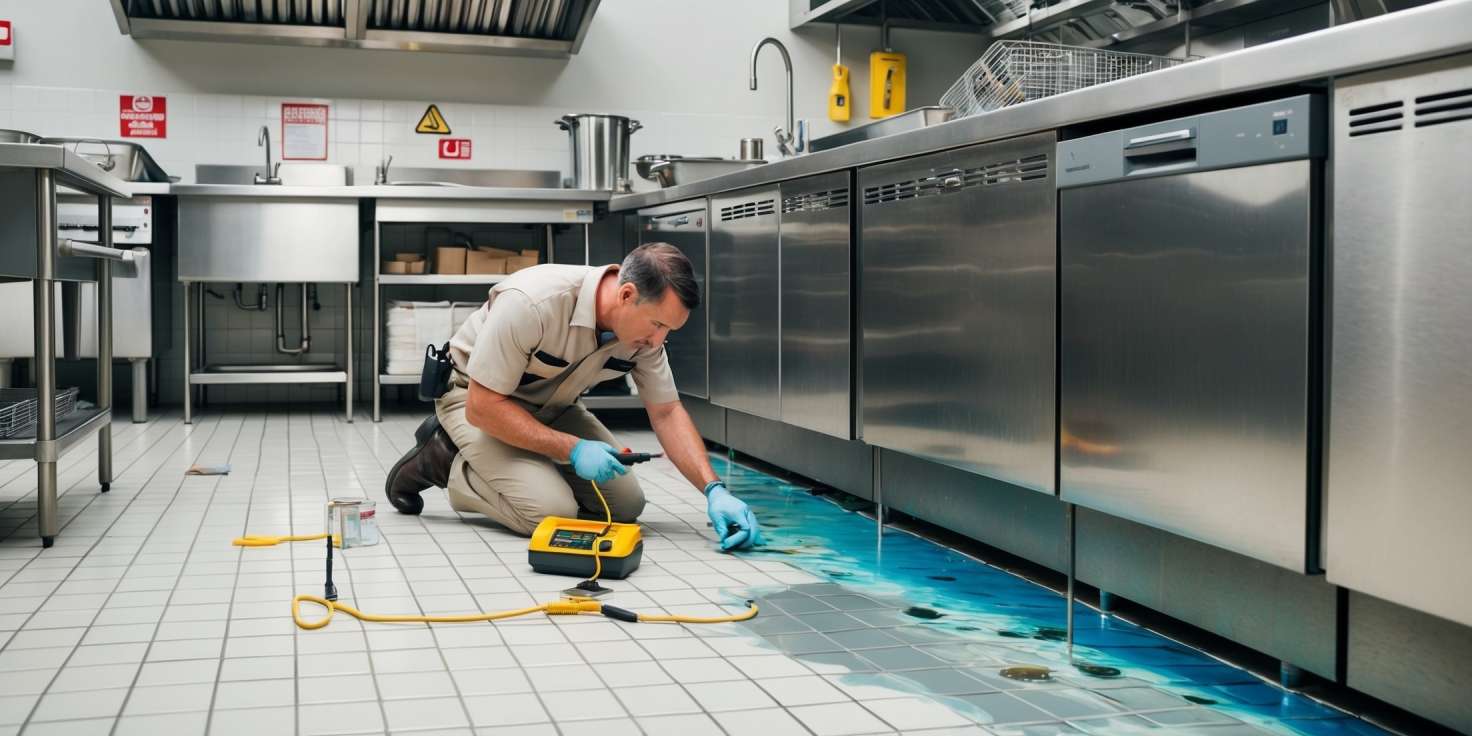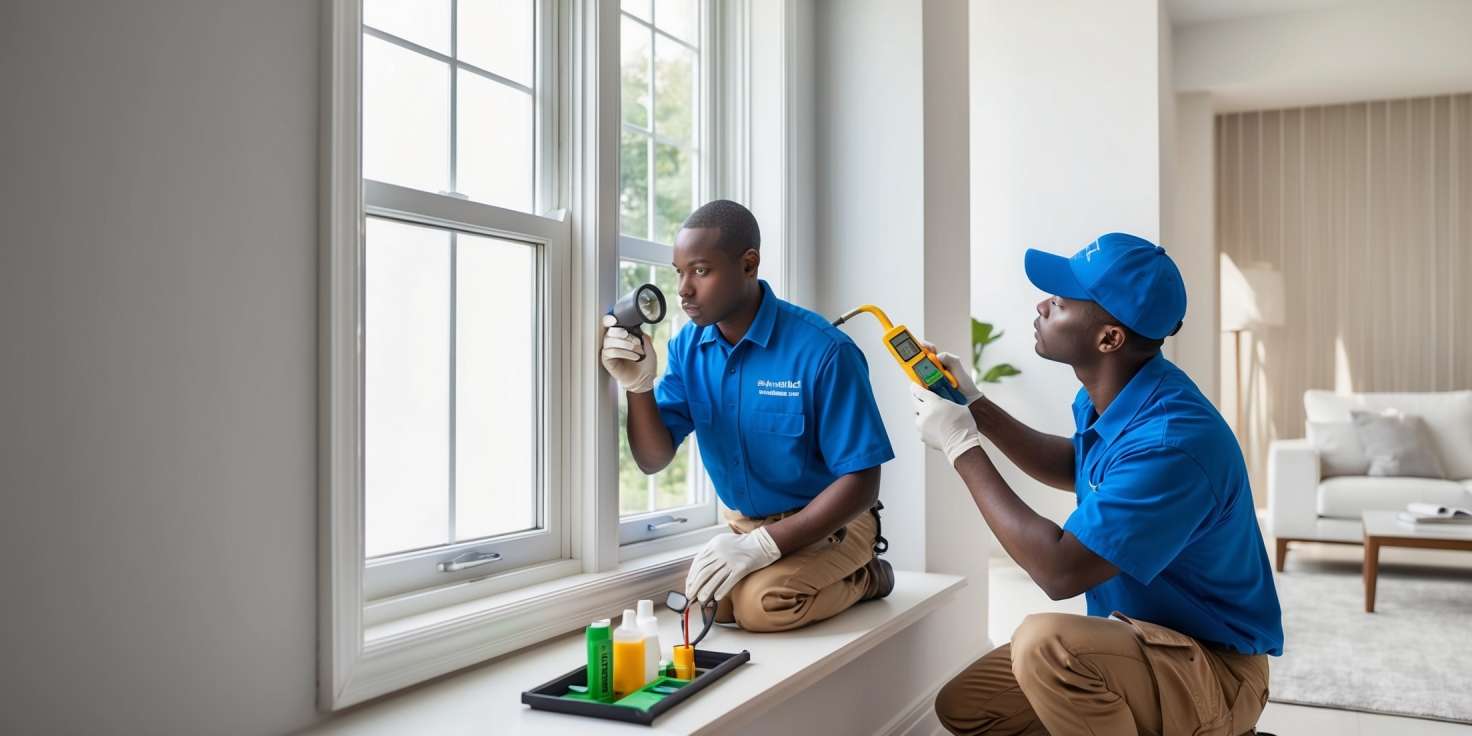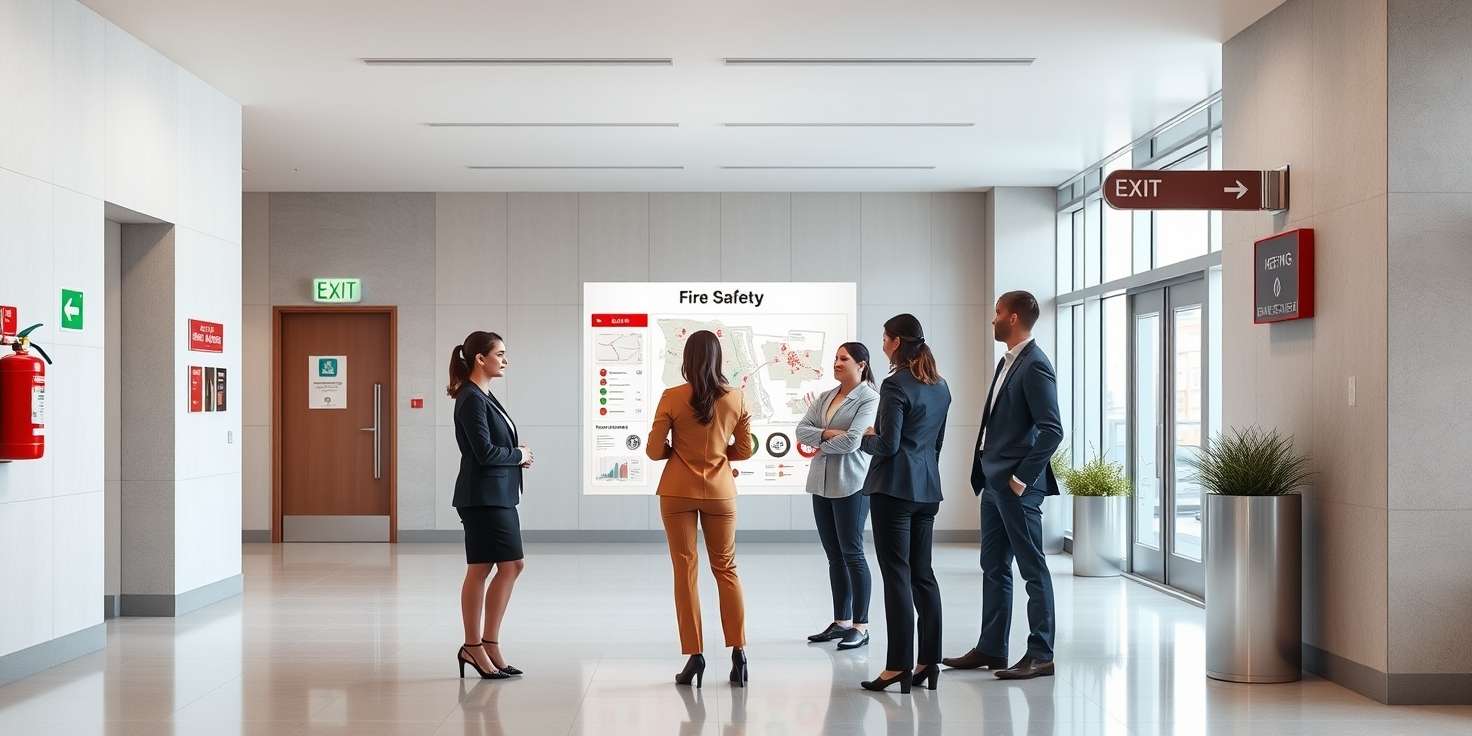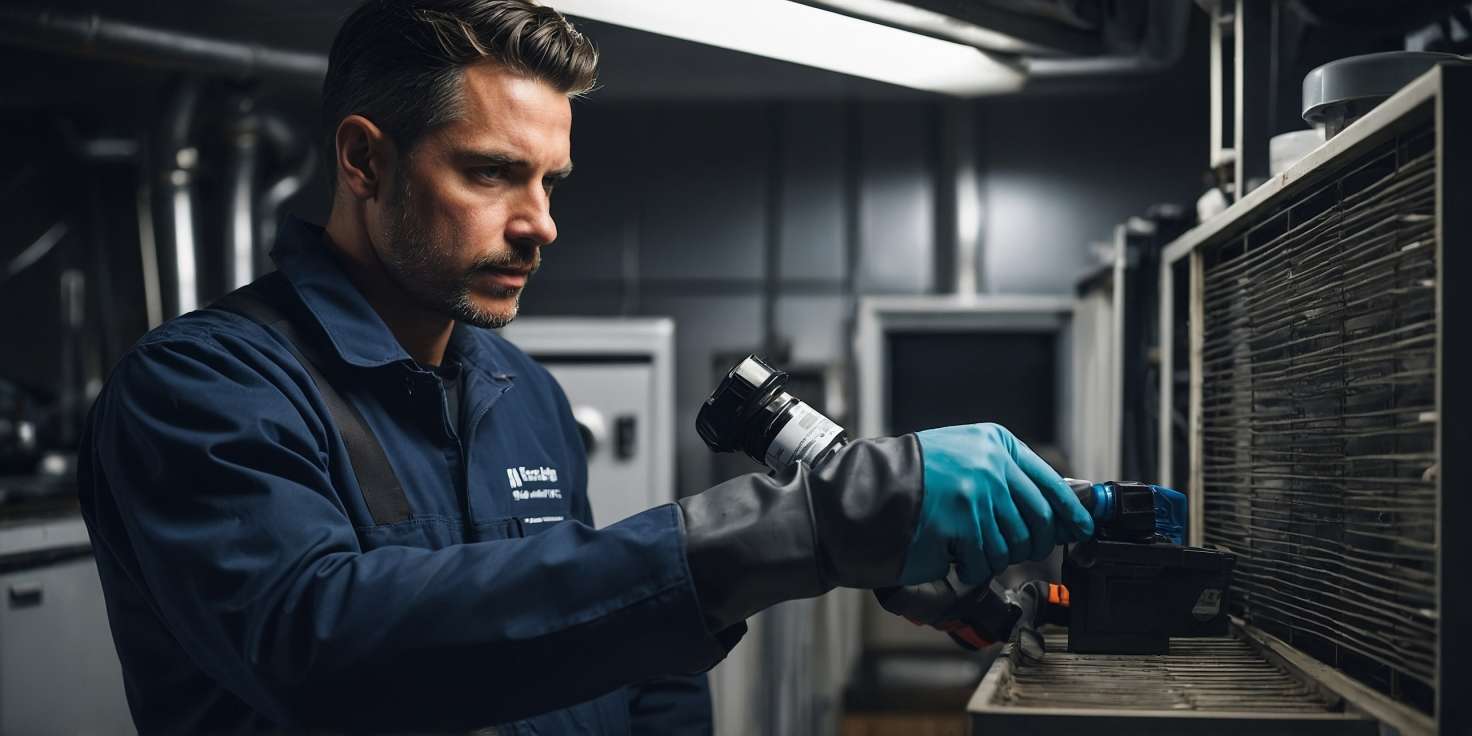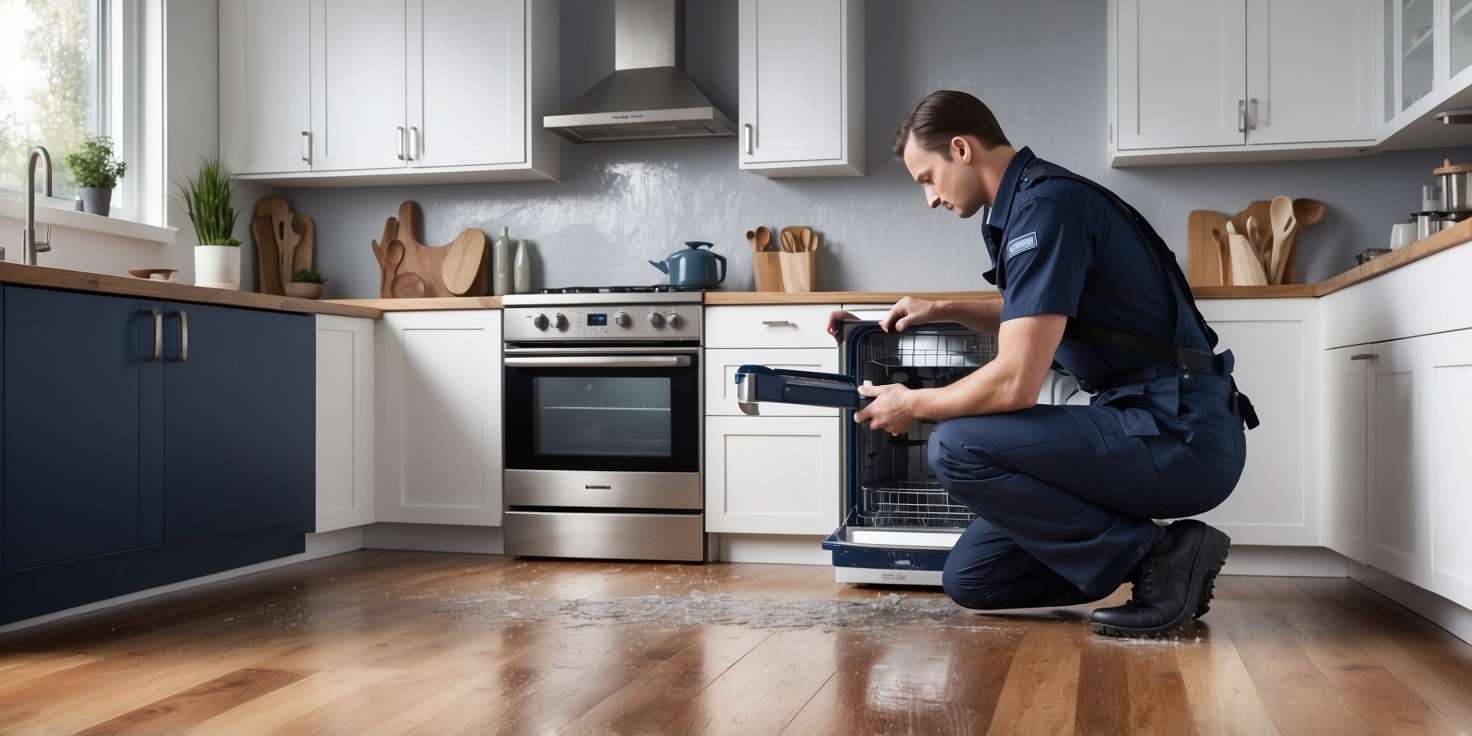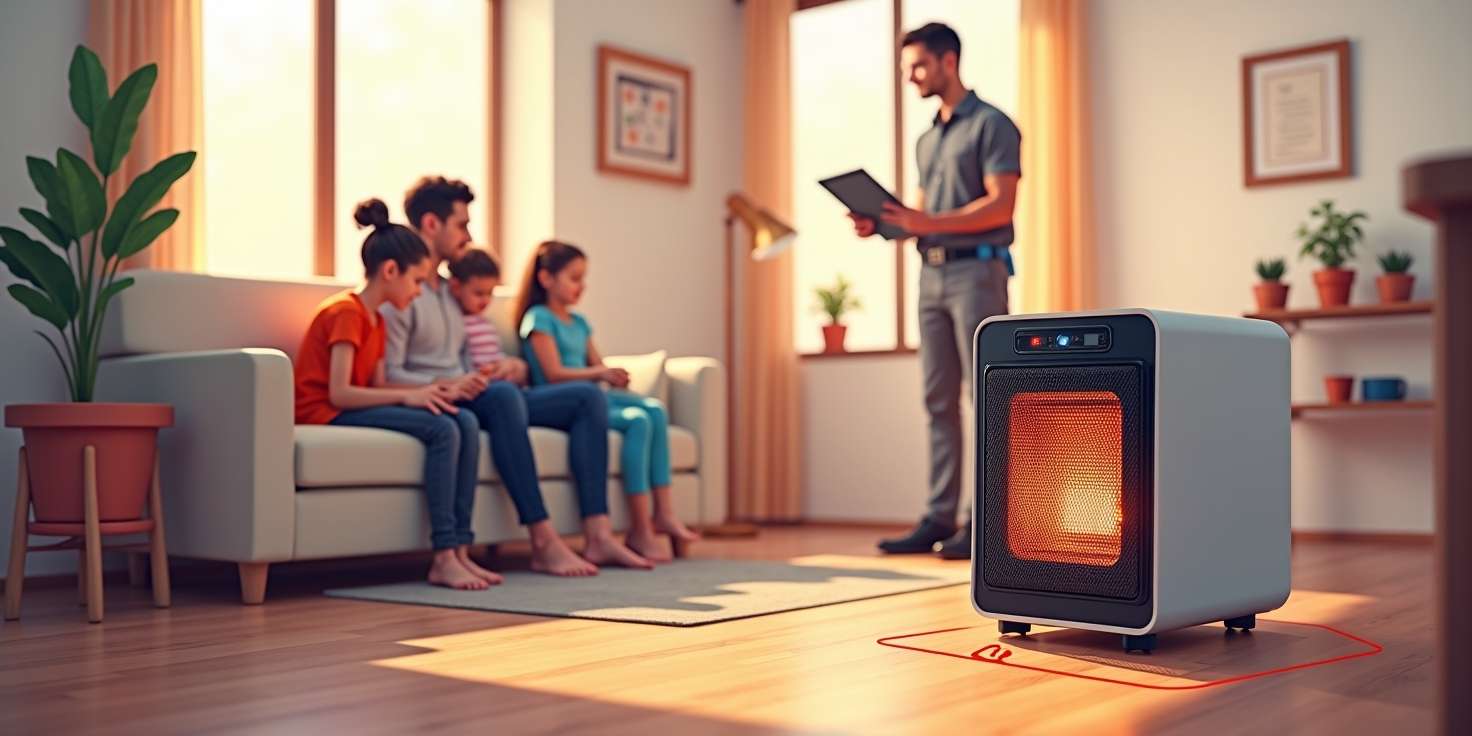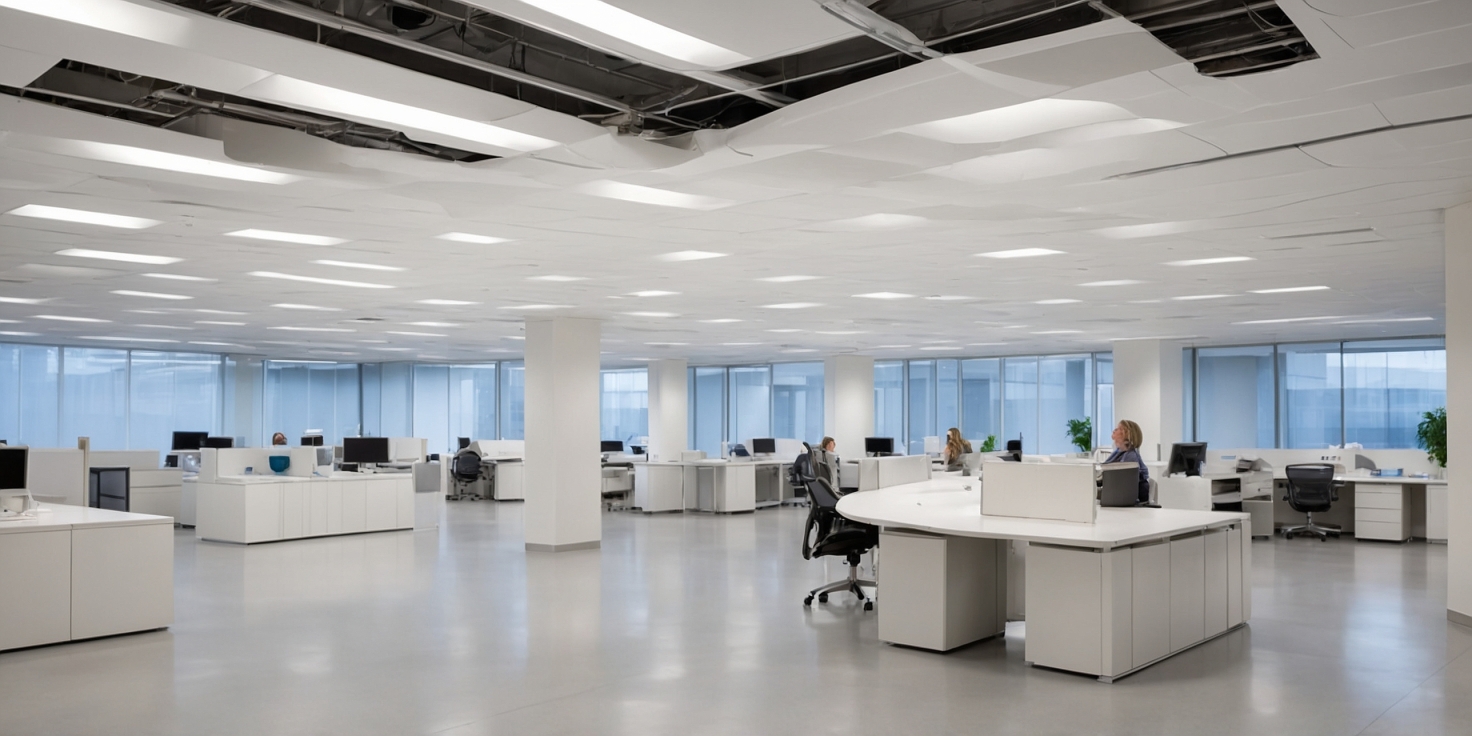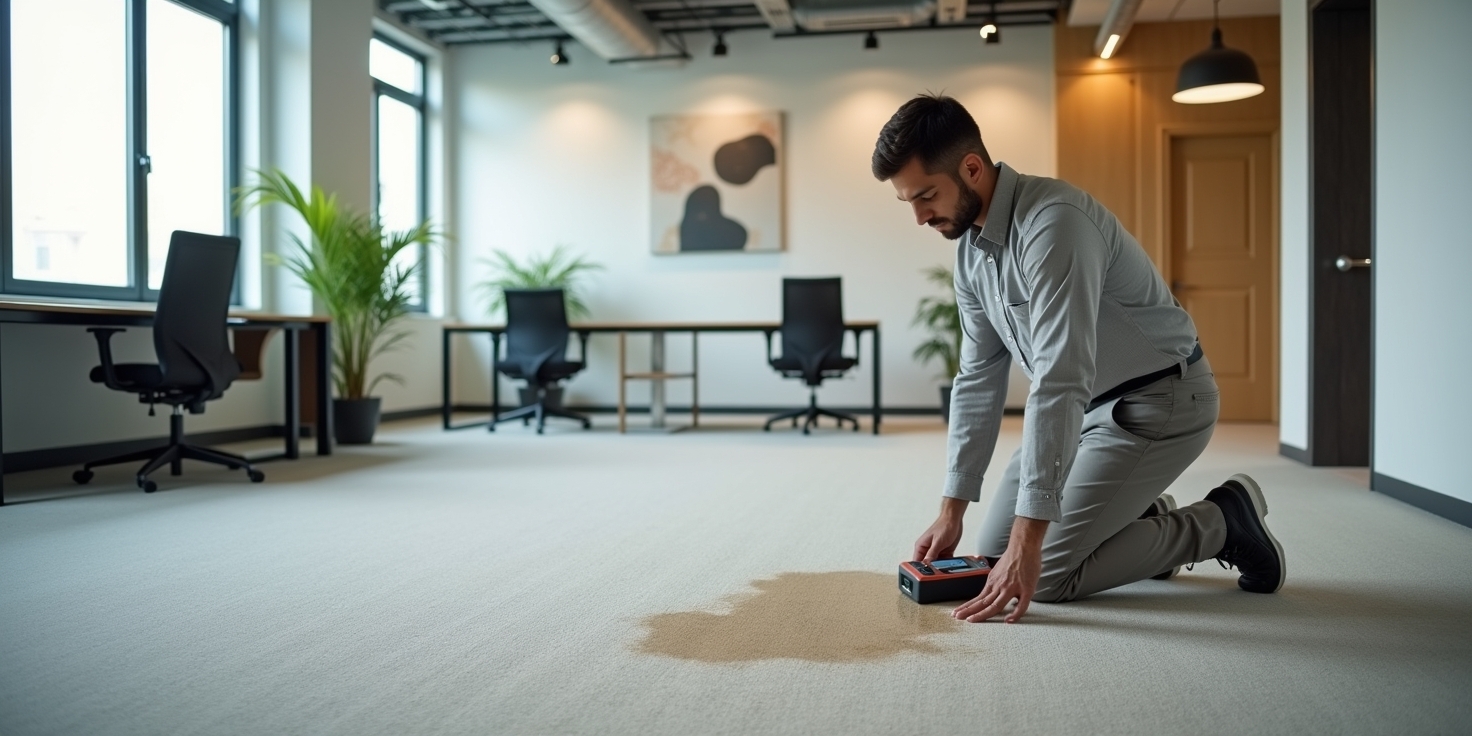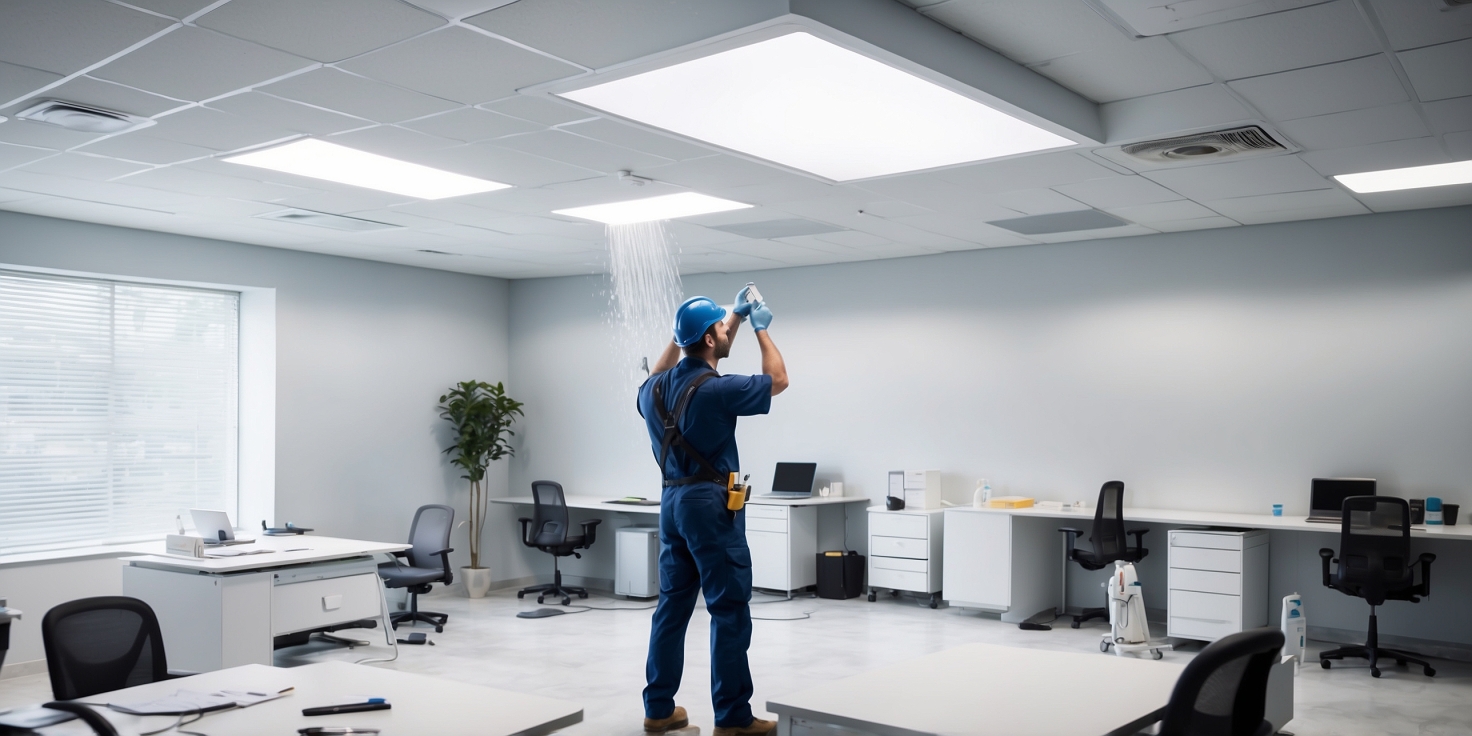Water damage risks in commercial kitchens are a serious concern for restaurant owners and facility managers. These high-traffic environments are constantly exposed to water from sinks, dishwashers, refrigeration units, and cooking processes, making them particularly vulnerable to leaks, flooding, and moisture buildup. If not addressed promptly, water damage can lead to costly repairs, mold growth, and even health code violations. At COMMITTED TO QUALITY SERVICE, we understand the urgency of water damage restoration and offer fast, friendly, and professional service to help you get back to business quickly. Our team uses specialized equipment designed specifically for drying structures that have suffered severe water damage, ensuring your commercial kitchen is safe, clean, and fully operational. Whether you’re dealing with a burst pipe, appliance leak, or unexpected flood, our expert technicians are just a call away at 855-933-7935. Don’t let water damage disrupt your operations—trust the professionals who are committed to quality service.
Common Causes of Water Damage in Commercial Kitchens
Water damage in commercial kitchens is a prevalent issue that can lead to costly repairs, operational downtime, and even health code violations if not addressed promptly. Understanding the root causes of water damage is essential for restaurant owners, facility managers, and commercial kitchen operators who aim to maintain a safe, efficient, and compliant environment. Commercial kitchens are high-activity zones where water is used extensively for cooking, cleaning, and sanitation. This constant exposure to moisture, combined with the complexity of plumbing systems and heavy-duty appliances, makes them particularly vulnerable to water-related issues.
One of the most common causes of water damage in commercial kitchens is plumbing failure. Pipes and fittings in commercial kitchens are under constant pressure and frequent use, which increases the likelihood of leaks or bursts. Over time, wear and tear on these systems can lead to small leaks that go unnoticed until they cause significant damage. According to the Insurance Institute for Business & Home Safety (IBHS), plumbing system failures are among the top causes of non-weather-related water damage in commercial properties. These failures can stem from corroded pipes, faulty connections, or even improper installation.
Another major contributor to water damage is malfunctioning or poorly maintained kitchen equipment. Commercial dishwashers, ice machines, and refrigerators with water dispensers are all potential sources of leaks. If these appliances are not regularly inspected and maintained, they can develop slow leaks that seep into flooring and walls, leading to mold growth and structural damage. For instance, a leaking dishwasher hose can release gallons of water over time, especially during overnight hours when the kitchen is not in use, making early detection difficult.
Clogged drains and grease traps also pose a significant risk. In a busy commercial kitchen, food particles, grease, and debris can accumulate rapidly, leading to blockages in the drainage system. When water cannot flow freely, it can back up and overflow, causing localized flooding. Grease traps, in particular, require regular cleaning and maintenance to function properly. If neglected, they can overflow and contribute to water damage and unpleasant odors, creating an unsanitary environment that may violate health regulations.
Roof leaks are another often-overlooked source of water damage in commercial kitchens. Many commercial kitchens are located in buildings with flat roofs, which are more susceptible to pooling water and leaks, especially during heavy rain or snow. If the roofing system is compromised or poorly maintained, water can seep through and damage ceiling tiles, insulation, and electrical systems. This type of damage can be particularly hazardous in a kitchen setting, where water and electricity are in close proximity.
Additionally, HVAC systems can be a hidden source of water damage. Air conditioning units and ventilation systems often produce condensation, which, if not properly drained, can accumulate and cause water damage over time. In some cases, blocked or damaged condensate drain lines can lead to water pooling in ceiling spaces or behind walls. This hidden moisture can foster mold growth, which not only damages the structure but also poses serious health risks to kitchen staff and patrons.
Human error and negligence also play a role in water damage incidents. For example, leaving a faucet running, failing to shut off water supply valves during maintenance, or improper cleaning practices can all lead to accidental flooding. In high-pressure environments like commercial kitchens, where staff are focused on speed and efficiency, such oversights are not uncommon. Implementing proper training and standard operating procedures can help mitigate these risks.
Fire suppression systems, while essential for safety, can also be a source of water damage if they malfunction or are triggered accidentally. These systems are designed to release large volumes of water or chemical agents to extinguish fires, but if activated unnecessarily, they can cause extensive water damage to kitchen equipment, flooring, and inventory. Regular inspections and maintenance of fire suppression systems are crucial to ensure they function correctly and only when needed.
To illustrate the variety of potential water damage sources in commercial kitchens, consider the following examples:
- A restaurant in Los Angeles experienced significant water damage after a dishwasher hose burst overnight, flooding the kitchen and damaging the subflooring.
- A catering facility in San Diego suffered mold growth behind walls due to a slow leak from an ice machine that went undetected for weeks.
- A bakery in San Francisco had to close temporarily after a clogged grease trap caused wastewater to back up into the kitchen during peak hours.
These real-world scenarios highlight the importance of proactive maintenance and early detection. According to FEMA, just one inch of water can cause up to $25,000 in damage to a commercial property. This underscores the need for regular inspections, prompt repairs, and investment in water detection technology.
"Preventing water damage in commercial kitchens is not just about fixing leaks; it’s about creating a culture of awareness and proactive maintenance," says the National Restaurant Association.
To minimize the risk of water damage, commercial kitchen operators should implement a comprehensive water management plan. This includes routine inspections of plumbing and appliances, scheduled maintenance of grease traps and HVAC systems, and staff training on emergency procedures. Installing water leak detection systems and automatic shut-off valves can also provide an added layer of protection.
For those seeking professional assistance, companies like Projekt Restoration offer specialized services tailored to the unique needs of commercial kitchens. Their team of experts can assess vulnerabilities, perform necessary repairs, and help implement preventive measures to safeguard your business.
In addition to addressing immediate concerns, understanding the long-term implications of water damage is crucial. Prolonged exposure to moisture can weaken structural components, degrade insulation, and create an environment conducive to mold growth. Mold not only damages property but also poses serious health risks, particularly in food preparation areas. For more information on mold-related issues, visit mold remediation services.
If you suspect hidden water damage or want to learn how to detect it early, check out this helpful guide on how to identify hidden water damage early. Early detection can save thousands of dollars in repairs and prevent business interruptions.
In conclusion, water damage in commercial kitchens can stem from a variety of sources, including plumbing failures, equipment malfunctions, clogged drains, roof leaks, HVAC issues, human error, and malfunctioning fire suppression systems. By understanding these common causes and taking proactive steps to address them, commercial kitchen operators can protect their investments, ensure compliance with health and safety regulations, and maintain a safe working environment for their staff. For more information about our approach and values, visit our mission page or explore our full range of services tailored to your needs.
The Role of Plumbing Failures in Kitchen Flooding
Plumbing failures are among the most common and disruptive causes of water damage in commercial kitchens. These failures can stem from a variety of sources, including aging pipes, faulty fixtures, clogged drains, or poorly maintained plumbing systems. In high-demand environments like commercial kitchens, where water usage is constant and intensive, even a minor leak can escalate quickly into a major flooding event. A burst pipe or a malfunctioning dishwasher hose, for example, can release gallons of water in a short time, saturating floors, damaging equipment, and creating hazardous working conditions. Over time, unnoticed leaks behind walls or under sinks can also lead to structural deterioration and mold growth, compromising the safety and hygiene of the kitchen. Preventative maintenance is essential to mitigate these risks, including regular inspections, timely repairs, and the use of high-quality plumbing materials. Additionally, staff should be trained to recognize early warning signs such as slow drainage, unusual odors, or water stains, which may indicate underlying plumbing issues. In the event of a plumbing-related flood, immediate action is crucial to minimize damage and downtime. Professional restoration services can help assess the extent of the damage, remove excess water, and restore affected areas to safe operating conditions. For businesses looking to understand more about the importance of proactive maintenance and emergency response, our services page offers detailed insights. Moreover, exploring our about section can provide a deeper understanding of our commitment to protecting commercial properties from water-related disasters.
How Leaky Appliances Contribute to Water Damage
In commercial kitchens, where efficiency and safety are paramount, the integrity of appliances plays a crucial role in maintaining a functional and hazard-free environment. However, leaky appliances such as dishwashers, ice machines, refrigerators, and sinks can become silent culprits of significant water damage if not properly maintained. These leaks often start small and go unnoticed, especially in high-traffic areas where constant activity can mask early warning signs. Over time, even minor leaks can lead to extensive damage to flooring, walls, and cabinetry, compromising the structural integrity of the kitchen and creating an ideal environment for mold growth. The constant presence of moisture can also deteriorate electrical systems, posing fire hazards and increasing the risk of equipment failure. In many cases, the damage caused by leaky appliances is not immediately visible, making it essential for commercial kitchen operators to conduct regular inspections and maintenance. Early detection is key, and understanding how to identify hidden water damage can prevent costly repairs and operational downtime. For more insights on this, visit our guide on how to identify hidden water damage. Additionally, investing in professional water damage restoration services can help mitigate the risks associated with appliance leaks. These services not only address the immediate damage but also implement preventative measures to avoid future issues. Learn more about our comprehensive services designed to protect your commercial kitchen from water-related hazards. By staying proactive and informed, business owners can ensure their kitchen remains safe, efficient, and compliant with health and safety regulations.
Impact of Water Damage on Kitchen Equipment and Infrastructure
Water damage in commercial kitchens can have far-reaching consequences, particularly when it comes to the integrity and functionality of kitchen equipment and infrastructure. These environments are typically filled with high-value appliances, complex plumbing systems, and specialized surfaces that are all vulnerable to moisture intrusion. When water damage occurs—whether from leaking pipes, faulty appliances, or flooding—it can compromise the performance and safety of essential kitchen equipment. Stainless steel surfaces may corrode, electrical components can short-circuit, and insulation around wiring may deteriorate, posing serious fire and safety hazards. Additionally, water infiltration can lead to the malfunction of refrigeration units, ovens, and dishwashers, resulting in costly repairs or replacements and potential downtime for the business.
Beyond the immediate impact on equipment, water damage can also weaken the structural integrity of the kitchen itself. Prolonged exposure to moisture can cause wood to rot, drywall to crumble, and tiles to loosen. Subflooring and ceiling materials may warp or collapse, especially if the water damage is hidden and left unaddressed for an extended period. This not only affects the kitchen’s functionality but also creates an unsafe working environment for staff. Moreover, water damage often leads to the growth of mold and mildew, which can spread quickly in humid kitchen conditions. Mold not only damages surfaces but also poses serious health risks to employees and customers, potentially leading to violations of health codes and temporary closure of the facility.
The financial implications of water damage in a commercial kitchen can be significant. Repairing or replacing damaged equipment and infrastructure is often expensive, and the associated downtime can lead to lost revenue. Insurance claims may cover some of the costs, but navigating the claims process can be time-consuming and stressful. Preventative maintenance and early detection are crucial to minimizing these risks. Business owners should regularly inspect plumbing systems, monitor for signs of leaks, and ensure that all kitchen equipment is properly maintained. Investing in professional water damage assessments can also help identify vulnerabilities before they escalate into major issues.
To mitigate the risks associated with water damage, it is essential to understand how it affects different components of a commercial kitchen. For example, water can seep into the seams of stainless steel countertops, leading to rust and bacterial growth. Similarly, wooden cabinetry and shelving can absorb moisture, causing them to swell and lose structural integrity. Electrical panels and outlets located near water sources are particularly vulnerable and can become fire hazards if not properly sealed and maintained. Even the HVAC system can be compromised if moisture infiltrates ductwork, leading to reduced air quality and increased energy costs.
In addition to physical damage, water intrusion can disrupt the workflow and efficiency of a commercial kitchen. Damaged equipment may operate at reduced capacity or fail entirely, forcing staff to adapt or halt operations. This can lead to delays in service, reduced customer satisfaction, and a tarnished reputation. Furthermore, water damage often requires extensive cleanup and restoration efforts, which can be disruptive and time-consuming. Professional restoration services can help expedite the recovery process and ensure that all affected areas are thoroughly dried, cleaned, and restored to their original condition.
Business owners should also be aware of the long-term consequences of untreated water damage. Over time, even minor leaks can lead to significant structural issues and mold infestations. These problems not only increase repair costs but also pose ongoing health and safety risks. Implementing a proactive maintenance plan and working with experienced restoration professionals can help prevent these issues from escalating. For more information on how to protect your commercial kitchen from water damage, visit our services page or learn more about our approach on the how it works section of our website.
Ultimately, understanding the impact of water damage on kitchen equipment and infrastructure is essential for maintaining a safe, efficient, and compliant commercial kitchen. By recognizing the signs of water damage early and taking swift action, business owners can protect their investments, ensure the safety of their staff and customers, and maintain uninterrupted operations.
Health and Safety Hazards from Water Intrusion
Water intrusion in commercial kitchens poses significant health and safety hazards that can compromise not only the structural integrity of the facility but also the well-being of staff and patrons. When water seeps into areas where it should not be, such as behind walls, under flooring, or into electrical systems, it creates an environment ripe for bacterial growth, mold development, and other dangerous conditions. In a high-traffic, high-moisture environment like a commercial kitchen, even minor leaks can escalate quickly into major health risks if not addressed promptly.
One of the most immediate concerns with water intrusion is the proliferation of mold and mildew. These fungi thrive in damp, dark environments and can begin to grow within 24 to 48 hours of water exposure. Mold spores can become airborne and circulate through the kitchen’s ventilation system, leading to respiratory issues, allergic reactions, and other health problems for kitchen staff. Prolonged exposure to mold can be especially harmful to individuals with asthma or weakened immune systems. In addition to health concerns, mold can also contaminate food preparation areas, utensils, and ingredients, potentially leading to foodborne illnesses and violations of health codes.
Another critical hazard is the increased risk of slips and falls. Water pooling on floors, especially in areas with heavy foot traffic, creates a slick surface that can lead to serious injuries. In a fast-paced kitchen environment where employees are constantly moving, carrying hot items, or handling sharp tools, a fall can result in severe consequences. Moreover, water intrusion can weaken flooring materials over time, making them more prone to cracking or collapsing, further increasing the risk of accidents.
Electrical hazards are also a major concern in commercial kitchens affected by water damage. Water is a conductor of electricity, and when it comes into contact with exposed wiring, outlets, or appliances, it can cause short circuits, equipment failure, or even fires. This not only endangers the lives of employees but can also lead to costly repairs and downtime. Ensuring that all electrical systems are inspected and maintained after any sign of water intrusion is essential for maintaining a safe working environment.
Additionally, water damage can compromise the structural integrity of the kitchen. Prolonged exposure to moisture can weaken walls, ceilings, and support beams, potentially leading to structural failures. This is particularly dangerous in commercial kitchens where heavy equipment and machinery are often mounted or stored. A compromised structure can result in equipment falling, walls collapsing, or ceilings caving in, posing serious risks to anyone in the vicinity.
The presence of standing water or excessive moisture can also attract pests such as rodents and insects. These pests are not only a nuisance but also carry diseases and can contaminate food supplies. Infestations can lead to failed health inspections, reputational damage, and even temporary or permanent closure of the business. Maintaining a dry and clean environment is crucial for pest control and overall kitchen hygiene.
To mitigate these risks, it is essential for commercial kitchen operators to implement regular inspections and maintenance routines. Early detection of water damage can prevent minor issues from becoming major hazards. Utilizing professional restoration services can ensure that any water intrusion is addressed thoroughly and effectively. For more information on how to identify and manage water damage, visit our detailed guide on how to identify hidden water damage early.
Incorporating preventive measures such as waterproof flooring, proper drainage systems, and moisture-resistant materials can also help reduce the likelihood of water-related hazards. Staff training on how to respond to leaks or spills promptly and effectively is another critical component of maintaining a safe kitchen environment. Partnering with experienced professionals who understand the unique challenges of commercial kitchen settings can make a significant difference in long-term safety and compliance.
At Projekt Restoration, we specialize in comprehensive solutions for water damage in commercial environments. Our team is equipped to handle everything from initial assessment to full restoration, ensuring your kitchen remains safe, functional, and compliant with health regulations. Learn more about our range of services designed to protect your business from the risks associated with water intrusion.
Understanding the full scope of health and safety hazards caused by water intrusion is the first step toward creating a safer commercial kitchen. By staying proactive and informed, business owners can protect their staff, customers, and investments from the potentially devastating effects of water damage. For more insights into our company values and commitment to quality, visit our about page.
Mold and Mildew Growth in Moist Kitchen Environments
In commercial kitchens, where high humidity, frequent water usage, and heat are part of daily operations, the risk of mold and mildew growth becomes a significant concern. These fungi thrive in moist environments, making kitchens particularly vulnerable, especially when water damage is not promptly addressed. Mold and mildew not only compromise the structural integrity of kitchen surfaces and equipment but also pose serious health risks to staff and customers. Spores released into the air can trigger allergic reactions, respiratory issues, and other health complications, particularly in individuals with weakened immune systems. The presence of mold can also lead to unpleasant odors and unsightly stains, which can tarnish a business’s reputation and violate health codes.
The growth of mold and mildew often begins in hidden or less accessible areas such as behind walls, under sinks, around dishwashers, and in ventilation systems. These areas can retain moisture from leaks, spills, or condensation, creating ideal breeding grounds for microbial growth. If left unchecked, mold can spread rapidly, making remediation more complex and costly. Regular inspections and maintenance are essential to detect early signs of water damage and prevent mold proliferation. Implementing proper ventilation systems, using dehumidifiers, and ensuring that all spills and leaks are promptly cleaned and repaired can significantly reduce the risk of mold development.
Moreover, commercial kitchen operators must be proactive in educating their staff about the importance of moisture control and the early signs of mold. Training employees to recognize discoloration, musty odors, or unusual dampness can lead to quicker reporting and resolution. In cases where mold is suspected or confirmed, it is crucial to seek professional assistance. Attempting to remove mold without proper equipment and expertise can exacerbate the problem and increase exposure risks. Professional mold remediation services are equipped to assess the extent of the infestation, safely remove contaminated materials, and restore the affected areas to a safe and sanitary condition.
In addition to health and safety concerns, mold and mildew can have financial implications for commercial kitchens. Persistent mold issues can lead to failed health inspections, temporary closures, and costly repairs. Insurance claims related to mold damage can also be complicated, especially if the damage is deemed preventable through regular maintenance. Therefore, investing in preventive measures and timely remediation is not only a health imperative but also a sound financial strategy.
Understanding the root causes of moisture buildup is key to effective prevention. Common sources include plumbing leaks, roof damage, poor drainage, and malfunctioning appliances. Identifying and addressing these issues early can prevent the conditions that allow mold to flourish. For more information on how to detect early signs of water damage, visit our guide on how to identify hidden water damage early. This resource provides valuable insights into spotting subtle indicators before they escalate into major problems.
At Projekt Restoration, we understand the unique challenges that commercial kitchens face when it comes to water damage and mold growth. Our comprehensive services are designed to address these issues promptly and effectively, ensuring that your kitchen remains a safe and compliant environment. Whether you need emergency water extraction, mold remediation, or ongoing maintenance support, our team is here to help you protect your investment and maintain the highest standards of cleanliness and safety.
Financial Consequences of Unaddressed Water Damage
When water damage in commercial kitchens goes unaddressed, the financial repercussions can be both immediate and long-term, significantly impacting the overall profitability and sustainability of the business. One of the most pressing concerns is the cost of structural repairs. Water infiltration can weaken walls, ceilings, and flooring, leading to extensive damage that requires costly reconstruction. Over time, moisture can deteriorate building materials such as drywall, wood, and insulation, which not only compromises the integrity of the structure but also necessitates expensive replacements. In commercial kitchens, where heavy equipment and high foot traffic are common, structural instability poses a serious safety risk, potentially resulting in liability claims and further financial strain.
In addition to structural damage, unaddressed water issues can lead to the malfunction or failure of essential kitchen equipment. Appliances like ovens, refrigerators, and dishwashers are not only expensive to replace but also critical to daily operations. Water exposure can cause electrical shorts, corrosion, and other mechanical failures that disrupt service and reduce productivity. Downtime due to equipment failure can lead to lost revenue, especially in high-volume food service establishments where efficiency is key. Moreover, insurance may not always cover damages resulting from negligence or lack of maintenance, leaving business owners to shoulder the full cost of repairs or replacements.
Another significant financial consequence is the potential for mold growth, which thrives in moist environments and can spread rapidly if not addressed promptly. Mold remediation is not only costly but also requires temporary closure of the affected area, leading to further revenue loss. In severe cases, health inspectors may mandate a complete shutdown of the kitchen until the issue is resolved, which can damage the business’s reputation and customer trust. For more information on how to tackle such issues, you can explore our mold remediation services designed to address these challenges efficiently.
Water damage can also lead to increased utility bills. Leaks and moisture can affect the efficiency of heating and cooling systems, forcing them to work harder and consume more energy. Additionally, water-damaged insulation loses its effectiveness, leading to higher heating and cooling costs. Over time, these increased operational expenses can erode profit margins, making it harder for businesses to invest in growth or improvements.
The financial burden extends beyond physical damage and operational disruptions. There are also regulatory and compliance costs to consider. Commercial kitchens are subject to strict health and safety regulations, and water damage can lead to violations that result in fines or even temporary closure. Health code violations related to mold, mildew, or unsanitary conditions caused by water damage can tarnish a business’s reputation and deter customers. In some cases, businesses may need to invest in professional inspections, certifications, or upgrades to meet compliance standards again, all of which add to the financial strain.
Furthermore, unaddressed water damage can negatively impact property value. Whether you own or lease the commercial space, water damage can reduce the market value of the property, making it less attractive to potential buyers or tenants. This depreciation can be particularly problematic for business owners looking to sell or expand, as it limits financial flexibility and potential return on investment. To understand how to maintain your property’s value and prevent such issues, visit our detailed guide on how to identify hidden water damage early.
Insurance premiums may also rise as a result of repeated or severe water damage claims. Insurers may view the property as high-risk, leading to increased rates or even denial of coverage. Without adequate insurance, future incidents could result in out-of-pocket expenses that are difficult to manage, especially for small or medium-sized businesses operating on tight budgets.
In the long run, the cumulative financial impact of unaddressed water damage can be devastating. From repair and replacement costs to lost revenue, increased operational expenses, regulatory fines, and diminished property value, the total cost can far exceed the investment required for timely maintenance and repairs. Proactive measures, such as regular inspections and prompt response to water-related issues, are essential to safeguarding the financial health of a commercial kitchen. For a comprehensive overview of the solutions we offer, please explore our services page to learn how we can help protect your business from these costly risks.
Importance of Regular Maintenance and Inspections
Regular maintenance and inspections play a critical role in preventing water damage in commercial kitchens, where the constant use of water, heat, and various appliances creates an environment highly susceptible to leaks, corrosion, and plumbing failures. These kitchens operate under intense conditions, with heavy-duty equipment and high foot traffic, making them particularly vulnerable to unnoticed wear and tear. Without a proactive approach to maintenance, small issues such as a dripping faucet, a cracked tile, or a loose pipe fitting can escalate into major water damage incidents that disrupt operations, compromise food safety, and result in costly repairs. Routine inspections help identify potential problem areas before they become emergencies, allowing business owners to take corrective action swiftly and efficiently.
One of the key benefits of regular maintenance is the early detection of hidden water damage. Moisture can accumulate behind walls, under floors, or within ceilings, often going unnoticed until it causes visible damage or mold growth. By scheduling consistent inspections, especially in high-risk areas like under sinks, near dishwashers, and around refrigeration units, facility managers can catch these issues early. This not only prevents structural damage but also helps maintain a safe and sanitary environment for food preparation. For more guidance on spotting early signs of water issues, visit our resource on how to identify hidden water damage early.
In addition to preventing damage, regular maintenance ensures that all kitchen systems are functioning at optimal efficiency. Plumbing systems, drainage, and ventilation must be kept in top condition to support the demanding operations of a commercial kitchen. A clogged drain or malfunctioning grease trap can quickly lead to water backups and flooding. Scheduled inspections allow for the timely cleaning and servicing of these components, reducing the risk of unexpected breakdowns. Moreover, maintaining equipment in good working order extends its lifespan, saving businesses from premature replacement costs and downtime.
Another important aspect of regular inspections is compliance with health and safety regulations. Commercial kitchens are subject to strict codes and standards, and water damage can lead to violations that result in fines or even temporary closures. Moisture-related issues such as mold growth or slippery floors pose serious health and safety hazards to both staff and customers. By implementing a routine maintenance schedule, business owners can ensure they remain compliant with local regulations and maintain a safe working environment. For more information on the services we offer to help maintain your kitchen’s integrity, explore our comprehensive services.
Regular maintenance also supports effective emergency preparedness. When inspections are conducted routinely, they provide a clear record of the condition of the kitchen’s infrastructure. This documentation can be invaluable in the event of a water damage incident, helping restoration professionals quickly identify the source of the problem and implement targeted solutions. It also aids in insurance claims, as having a history of maintenance can demonstrate due diligence and potentially expedite the claims process.
Furthermore, consistent upkeep fosters a culture of accountability and awareness among kitchen staff. When employees are trained to recognize early signs of water damage and understand the importance of reporting issues promptly, it creates a proactive environment where problems are addressed before they escalate. This collaborative approach not only protects the physical infrastructure but also enhances overall operational efficiency.
In conclusion, regular maintenance and inspections are essential for mitigating water damage risks in commercial kitchens. They provide early detection of issues, ensure compliance with safety regulations, extend the lifespan of equipment, and support a safe and efficient working environment. By investing in a proactive maintenance strategy, commercial kitchen operators can protect their assets, reduce downtime, and maintain the high standards necessary for successful food service operations. To learn more about our commitment to helping businesses stay protected, visit our our mission page.
Early Warning Signs of Water Damage to Watch For
Recognizing the early warning signs of water damage in commercial kitchens is essential for preventing costly repairs, health hazards, and operational disruptions. These environments are particularly vulnerable due to the constant use of water, high humidity levels, and the presence of multiple plumbing and drainage systems. One of the first indicators of potential water damage is the appearance of discoloration or stains on walls, ceilings, or floors. These marks often suggest a slow leak or moisture buildup behind surfaces, which can go unnoticed until significant damage has occurred. Another common sign is the presence of a musty or damp odor, which typically indicates mold growth or hidden moisture. Mold thrives in moist environments and can spread quickly, posing serious health risks to kitchen staff and violating health codes. If you notice peeling paint, bubbling wallpaper, or warped surfaces, these could also be signs of water intrusion. These visual cues often point to prolonged exposure to moisture, which compromises the structural integrity of the building materials.
Unexplained increases in water bills can also serve as a red flag. A sudden spike in water usage without a corresponding increase in kitchen activity may indicate a hidden leak. Regularly monitoring utility bills can help detect such issues early. Additionally, listen for unusual sounds such as dripping or running water when all appliances are turned off. These sounds may be coming from behind walls or under floors, signaling a leak that requires immediate attention. Another subtle but important indicator is the presence of condensation on windows, pipes, or walls. While some condensation is normal in a kitchen environment, excessive moisture can be a sign of poor ventilation or hidden leaks. Over time, this can lead to mold growth and damage to surrounding materials.
Flooring issues are another early sign of water damage. In commercial kitchens, floors are often made of tile or other water-resistant materials, but they are not immune to damage. Loose tiles, soft spots, or buckling can indicate water seeping underneath the surface. These issues not only compromise the floor’s durability but also create slip hazards for staff, increasing the risk of workplace injuries. Similarly, cabinetry and storage units near sinks or dishwashing stations may show signs of swelling, warping, or deterioration due to prolonged exposure to moisture. These signs should not be ignored, as they often point to ongoing leaks or poor drainage.
In some cases, you may notice rust or corrosion on metal fixtures, pipes, or appliances. This is a clear indication that water is coming into contact with these surfaces more frequently than it should. Left unaddressed, corrosion can lead to equipment failure and costly replacements. It’s also important to inspect areas that are not immediately visible, such as under sinks, behind appliances, and in ceiling voids. These hidden spaces are often where water damage begins and can go undetected for long periods. For more detailed guidance on identifying hidden issues, visit our page on how to identify hidden water damage early.
Regular inspections and maintenance are key to catching these early warning signs before they escalate. Implementing a routine checklist for staff to monitor common problem areas can be an effective strategy. Training your team to recognize and report these signs ensures that issues are addressed promptly, minimizing downtime and repair costs. If you suspect water damage, it’s crucial to consult professionals who specialize in commercial kitchen environments. Our team offers comprehensive services tailored to detect and mitigate water damage efficiently and effectively.
Understanding and acting on these early warning signs can save your business from significant financial and operational setbacks. By staying vigilant and proactive, you can maintain a safe, compliant, and efficient kitchen environment. For more information about our approach and values, explore our mission and discover how we support businesses like yours in maintaining optimal conditions.
Preventive Measures to Minimize Water Damage Risks
Preventing water damage in commercial kitchens requires a proactive approach that combines regular maintenance, staff training, and the implementation of effective systems to detect and mitigate potential risks. One of the most critical steps is conducting routine inspections of plumbing systems, including pipes, faucets, and drainage systems. These inspections help identify early signs of wear and tear, corrosion, or leaks that could escalate into significant water damage if left unaddressed. Installing water leak detection systems can also provide an added layer of protection by alerting staff to the presence of moisture in hidden areas, allowing for immediate action before the problem worsens. Additionally, ensuring that all kitchen equipment is properly installed and maintained according to manufacturer guidelines can prevent malfunctions that might lead to water leaks. For example, dishwashers, ice machines, and refrigeration units should be checked regularly for signs of leakage or drainage issues.
Another essential preventive measure is staff education. Training kitchen employees to recognize the early signs of water damage, such as discoloration on walls or ceilings, musty odors, or unusual moisture on surfaces, can significantly reduce the risk of extensive damage. Staff should also be instructed on proper cleaning protocols to avoid water accumulation in areas prone to moisture buildup. Moreover, implementing a clear reporting system for maintenance issues ensures that minor problems are addressed promptly before they escalate. Proper ventilation is also crucial in preventing water damage, as it helps control humidity levels and reduces condensation that can lead to mold growth and structural deterioration. Installing exhaust fans and dehumidifiers in high-moisture areas can help maintain a balanced indoor environment.
Flooring and wall materials in commercial kitchens should be water-resistant and easy to clean. Using non-porous materials like ceramic tiles or stainless steel can prevent water absorption and make it easier to spot and clean spills. Sealing joints and corners with waterproof caulking further reduces the risk of water seeping into hidden areas. Additionally, maintaining clear and functional drainage systems is vital. Floor drains should be kept free of debris, and grease traps should be cleaned regularly to prevent blockages that can cause water to back up into the kitchen. In areas where flooding is a concern, installing backflow prevention devices can protect the kitchen from contaminated water entering the system.
It is also beneficial to have a comprehensive emergency response plan in place. This plan should outline the steps to take in the event of a water-related incident, including shutting off the water supply, contacting professional restoration services, and documenting the damage for insurance purposes. Having a reliable restoration partner can make a significant difference in minimizing downtime and financial loss. For more information about professional restoration solutions, visit our services page. Regularly reviewing and updating the emergency plan ensures that all staff members are prepared to act quickly and effectively in case of an emergency.
Incorporating smart technology into your kitchen’s infrastructure can also enhance your preventive strategy. Smart sensors and automated shut-off valves can detect leaks and respond instantly to prevent further damage. These technologies can be integrated with mobile alerts, allowing facility managers to monitor the kitchen environment remotely. Additionally, scheduling periodic professional assessments can help identify vulnerabilities that may not be visible during routine checks. These assessments often include moisture mapping, thermal imaging, and other advanced techniques to detect hidden issues. To learn more about identifying concealed water damage, explore our guide on how to identify hidden water damage early.
Finally, maintaining a relationship with a trusted restoration company ensures that expert help is readily available when needed. Whether it’s addressing minor leaks or responding to a major water intrusion, having a dedicated team familiar with your facility can streamline the recovery process. To understand more about our approach and commitment to quality, visit our our mission page. By implementing these preventive measures, commercial kitchen operators can significantly reduce the risk of water damage, protect their investments, and maintain a safe, hygienic environment for staff and customers alike.
Emergency Response Steps for Water Incidents
When a water incident occurs in a commercial kitchen, time is of the essence. Immediate and well-coordinated action can significantly reduce the extent of damage, minimize downtime, and prevent long-term structural and health issues. The first step in responding to water damage is to ensure safety. Turn off electricity in affected areas to prevent electrical hazards, especially when standing water is present. If the source of the water is a burst pipe or malfunctioning appliance, shut off the main water supply to stop further flooding. Once the area is secure, assess the situation to determine the severity of the damage. This includes identifying the type of water involved—clean, gray, or black water—as each requires a different level of response and sanitation. Clean water from a broken pipe poses less risk than black water from sewage backups, which can carry harmful bacteria and contaminants.
After the initial assessment, it is crucial to begin water extraction and drying as quickly as possible. Use wet vacuums, pumps, and industrial fans to remove standing water and promote air circulation. Dehumidifiers can help reduce moisture levels in the air, preventing the growth of mold and mildew. In a commercial kitchen, where food safety is paramount, all affected surfaces, equipment, and utensils must be thoroughly cleaned and sanitized. Any porous materials such as insulation, ceiling tiles, or drywall that have absorbed water may need to be removed and replaced to prevent mold growth and structural deterioration. It is also advisable to document the damage with photos and detailed notes, which can be essential for insurance claims and future reference.
Engaging professional restoration services early in the process can make a significant difference in recovery outcomes. Experts have the tools and experience to handle water damage efficiently and safely, ensuring that all affected areas are properly dried, cleaned, and restored. They can also conduct moisture mapping and use infrared cameras to detect hidden water pockets behind walls or under floors, which are often missed during a basic inspection. For more information on professional restoration services, visit our services page. Additionally, understanding the common causes and signs of water damage can help kitchen managers take preventive measures. Regular maintenance of plumbing systems, proper installation of kitchen appliances, and staff training on emergency protocols can all contribute to a more resilient kitchen environment.
Communication is another critical component of an effective emergency response. Notify all relevant personnel, including kitchen staff, building management, and maintenance teams, as soon as a water incident is detected. Clear communication ensures that everyone is aware of the situation and can act accordingly to protect themselves and the facility. In some cases, it may be necessary to temporarily close the kitchen to ensure safety and compliance with health regulations. During this time, working with a reliable restoration company can expedite the recovery process and help you return to normal operations as quickly as possible. To learn more about our approach and commitment to quality, visit our about page.
Finally, after the immediate crisis has been managed, it is important to conduct a thorough post-incident review. This includes evaluating the effectiveness of the response, identifying any gaps in the emergency plan, and implementing improvements to prevent future incidents. Consider scheduling regular inspections and investing in water detection systems that can alert you to leaks before they become major problems. By taking a proactive and informed approach to water damage, commercial kitchen operators can protect their investments, ensure food safety, and maintain a safe working environment for their staff.
Choosing the Right Water-Resistant Materials for Kitchens
Selecting appropriate water-resistant materials is a critical step in safeguarding commercial kitchens from the costly and disruptive effects of water damage. These high-traffic environments are constantly exposed to moisture, spills, steam, and cleaning agents, making them particularly vulnerable to deterioration if not properly equipped. The right materials not only enhance durability but also contribute to hygiene, safety, and long-term cost savings. When choosing materials for surfaces such as flooring, walls, countertops, and cabinetry, it’s essential to prioritize those that are specifically designed to resist water infiltration and are easy to maintain. For flooring, options like commercial-grade vinyl, sealed concrete, and ceramic tiles are popular due to their non-porous nature and resistance to warping or cracking under wet conditions. Wall coverings should also be non-absorbent and easy to clean, such as stainless steel panels or water-resistant wallboards. Countertops made from quartz or stainless steel offer both durability and resistance to moisture, while avoiding materials like untreated wood or porous stone that can absorb water and harbor bacteria. In addition to selecting the right materials, proper installation and sealing are crucial to prevent water from seeping into joints and crevices. Regular maintenance and inspections can further extend the lifespan of these materials and prevent minor issues from escalating into major problems. For businesses looking to protect their investment and maintain a safe, compliant kitchen environment, working with professionals who understand the unique challenges of commercial kitchen design is highly recommended. Learn more about our specialized services tailored to commercial spaces. Additionally, understanding the broader implications of water damage and how to detect it early can be invaluable. Visit our guide on how to identify hidden water damage early to stay proactive in your maintenance efforts. By investing in the right water-resistant materials and staying informed, commercial kitchen operators can significantly reduce the risk of water-related disruptions and maintain a safe, efficient workspace.
Insurance Considerations for Water Damage Coverage
When it comes to managing water damage risks in commercial kitchens, understanding the nuances of insurance coverage is essential for protecting your business from financial setbacks. Water damage can arise from a variety of sources such as burst pipes, faulty appliances, or even natural disasters, and the costs associated with repairs, equipment replacement, and business interruption can be substantial. Therefore, having the right insurance policy in place is not just a precaution but a necessity. Commercial property insurance typically covers water damage, but the extent of coverage can vary significantly depending on the policy details and the cause of the damage. For instance, sudden and accidental water damage from a broken dishwasher hose may be covered, while gradual leaks due to poor maintenance might not be. It is crucial for kitchen operators and business owners to thoroughly review their insurance policies and consult with their insurance providers to understand what is included and what is excluded.
Another important consideration is whether your policy includes coverage for business interruption. In a busy commercial kitchen, even a short-term closure due to water damage can result in significant revenue loss. Business interruption insurance can help cover lost income and operating expenses during the downtime, ensuring that your business can recover more smoothly. Additionally, some policies may offer coverage for mold remediation, which is often a consequence of untreated water damage. Mold can spread quickly in humid environments like kitchens, posing health risks and further complicating recovery efforts. To ensure comprehensive protection, it is advisable to explore policy add-ons or endorsements that specifically address mold and water damage-related issues.
Documentation is another key aspect of managing insurance claims effectively. Keeping detailed records of maintenance, inspections, and repairs can support your claim and demonstrate that you have taken reasonable steps to prevent damage. In the event of an incident, prompt reporting and thorough documentation of the damage, including photographs and professional assessments, can expedite the claims process. Working with a restoration company that understands the insurance process can also be beneficial. At Projekt Restoration, we not only provide expert restoration services but also assist clients in navigating the complexities of insurance claims. Learn more about our services and how we support businesses during recovery.
It is also wise to periodically reassess your insurance coverage as your business grows or changes. For example, if you have recently upgraded kitchen equipment or expanded your facility, your existing policy may no longer provide adequate coverage. Regular reviews with your insurance agent can help ensure that your policy evolves with your business needs. Additionally, understanding the geographical risks associated with your location, such as flood zones or aging infrastructure, can inform your decision to purchase supplemental coverage like flood insurance, which is typically not included in standard commercial property policies.
Proactive risk management, combined with the right insurance coverage, forms a strong defense against the financial impact of water damage. Business owners should also educate their staff on emergency procedures and ensure that all safety and maintenance protocols are followed diligently. For more insights into how to protect your commercial kitchen from water damage and other hazards, visit our blog or explore our about page to learn more about our commitment to helping businesses stay resilient.
Partnering with Professionals for Water Damage Restoration
When water damage strikes a commercial kitchen, the consequences can be both immediate and long-lasting, affecting everything from food safety and employee health to operational efficiency and regulatory compliance. In such high-stakes environments, partnering with experienced professionals for water damage restoration is not just a smart decision—it is a critical one. Professional restoration teams bring a wealth of knowledge, specialized equipment, and proven techniques to address water damage swiftly and effectively, minimizing downtime and preventing further complications. These experts are trained to assess the full extent of the damage, including hidden moisture that can lead to mold growth or structural deterioration if left untreated. Their comprehensive approach ensures that every aspect of the kitchen—from flooring and walls to appliances and ventilation systems—is thoroughly inspected and restored to meet health and safety standards.
One of the key advantages of working with professionals is their ability to respond quickly. Time is of the essence in water damage scenarios, especially in commercial kitchens where delays can lead to significant revenue loss and potential health code violations. Restoration specialists typically offer 24/7 emergency services, allowing them to begin mitigation efforts immediately. This rapid response helps contain the damage, reduce repair costs, and get the kitchen back in operation as soon as possible. Moreover, professional teams use industrial-grade equipment such as high-powered dehumidifiers, air movers, and moisture meters to ensure that all affected areas are properly dried and sanitized. This level of thoroughness is difficult to achieve with standard cleaning methods and is essential for preventing secondary issues like mold infestations.
Another crucial benefit of hiring professionals is their ability to navigate the complexities of insurance claims. Water damage in commercial kitchens often involves significant financial implications, and dealing with insurance companies can be a daunting task. Restoration experts are familiar with the documentation and procedures required to file accurate and timely claims. They can provide detailed reports, photographic evidence, and moisture readings that support your case, increasing the likelihood of a favorable settlement. This administrative support not only saves time but also reduces the stress associated with managing a water damage incident.
In addition to immediate restoration, professionals also offer valuable insights into preventing future water damage. They can identify vulnerabilities in your kitchen’s plumbing, drainage, and ventilation systems, recommending upgrades or maintenance practices that enhance resilience. For instance, they might suggest installing water leak detectors, upgrading to water-resistant flooring, or scheduling regular inspections of high-risk areas. These proactive measures can significantly reduce the risk of recurring issues, protecting your investment and ensuring uninterrupted operations. To learn more about how these services can benefit your business, visit our services page for a detailed overview.
Furthermore, professional restoration companies often work in compliance with local health and safety regulations, ensuring that all repairs and restorations meet the required standards. This is particularly important in commercial kitchens, where even minor oversights can lead to serious consequences during health inspections. By entrusting the restoration process to certified professionals, business owners can rest assured that their kitchen will be restored not only to its original condition but also in full compliance with industry regulations. This level of assurance is invaluable in maintaining customer trust and avoiding potential legal issues.
Choosing the right restoration partner also means gaining access to a network of related services that can further support your recovery efforts. Many companies offer integrated solutions that include mold remediation, fire damage repair, and ongoing maintenance plans. For example, if water damage has led to mold growth behind walls or under flooring, a professional team can seamlessly transition into mold removal and remediation, ensuring a comprehensive solution. You can explore more about these interconnected services on our mold remediation page.
Moreover, professional restoration teams often provide education and training for your staff, helping them recognize early signs of water damage and understand the steps to take in an emergency. This knowledge empowers your team to act quickly and effectively, potentially preventing minor issues from escalating into major problems. Training sessions can cover topics such as how to shut off water sources, identify unusual odors or discoloration, and report concerns promptly. This collaborative approach fosters a culture of awareness and preparedness within your organization.
In the long run, investing in professional water damage restoration services is a cost-effective strategy. While it may seem like an added expense initially, the long-term savings from reduced downtime, lower repair costs, and minimized risk of future damage far outweigh the upfront costs. Additionally, maintaining a clean, safe, and fully operational kitchen enhances your reputation and customer satisfaction, which are crucial for sustained business success.
Ultimately, the decision to partner with professionals for water damage restoration reflects a commitment to quality, safety, and operational excellence. It demonstrates that you value your business, your employees, and your customers enough to ensure that your kitchen remains a safe and efficient environment. Whether you are dealing with a current water damage issue or looking to strengthen your preparedness for the future, professional restoration services offer the expertise and resources needed to protect your commercial kitchen. To learn more about our team and our approach, visit our about page.
Sure! Here’s a suitable FAQ section for a blog topic on "Water Damage Risks in Commercial Kitchens," incorporating relevant information:
Frequently Asked Questions (FAQ)
- Why is water damage a concern in commercial kitchens?
Commercial kitchens are high-activity environments that use large volumes of water for cooking, cleaning, and sanitation. This constant exposure increases the risk of leaks, spills, and equipment malfunctions, which can lead to water damage. If not addressed promptly, water damage can compromise structural integrity, promote mold growth, and disrupt business operations.
- What are the common causes of water damage in commercial kitchens?
Some of the most common causes include:
- Leaking or burst pipes
- Malfunctioning dishwashers or refrigeration units
- Clogged or overflowing drains
- Faulty plumbing fixtures
- Improperly sealed floors and walls
- Fire suppression system discharge
- How can water damage affect my business?
Water damage can lead to:
- Costly repairs to flooring, walls, and equipment
- Health code violations due to mold or unsanitary conditions
- Temporary or permanent closure of the kitchen
- Loss of inventory and revenue
- Increased insurance premiums
- What are the signs of water damage I should look out for?
Early signs include:
- Damp or musty odors
- Discoloration or staining on walls, ceilings, or floors
- Warped or soft flooring
- Mold or mildew growth
- Unexplained increases in water bills
- Pooling water or persistent damp areas
- How can I prevent water damage in my commercial kitchen?
Prevention tips include:
- Regularly inspect plumbing and appliances for leaks or wear
- Install floor drains and ensure proper drainage
- Use water-resistant materials for flooring and walls
- Train staff to report and clean up spills immediately
- Schedule routine maintenance for kitchen equipment
- Install water leak detection systems
- What should I do if I discover water damage?
Act quickly by:
- Shutting off the water source if possible
- Contacting a professional water damage restoration service
- Documenting the damage for insurance purposes
- Removing standing water and drying affected areas
- Inspecting for mold and structural damage
- Is water damage covered by commercial insurance?
Most commercial property insurance policies cover sudden and accidental water damage, such as from a burst pipe. However, damage due to neglect or lack of maintenance may not be covered. It’s important to review your policy and speak with your insurance provider to understand your coverage.
If you have more questions or need help protecting your commercial kitchen from water damage, feel free to contact us or consult a professional restoration expert.

